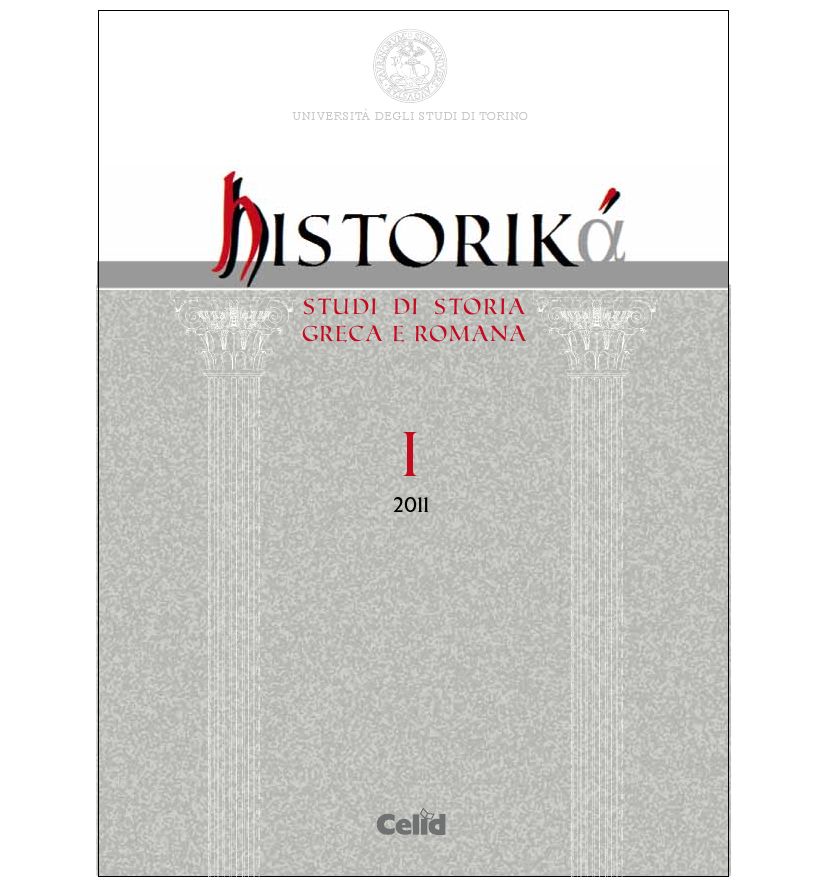Tra retorica, letteratura ed epigrafia: esempi di laudes urbium tardoantiche
DOI:
https://doi.org/10.13135/2039-4985/22Abstract
Through the analysis of Libanio's Antiochikos and some epigraphical and literary documents, we can understand the typical features of rhetoric model of the town in imperial and late antique age, either in Eastern and Western areas. Town's heart is the forum, political, administrative, religious centre, and the show places and thermae, where the different social classes could be seen together. Neverthless Christianity was progressively imposing itself, religious buildings are not, generally, ideological elements typical of urban topography, while in some documents we can see that more and more importance is given to city walls that, from a simple symbolic and monumental feature are going to be considered as a real needed defensive means, so important to almost exclusively connote the urban condition in the passage from Late Antiquity to Middle Age.Attraverso l’analisi dell’Antiochikos di Libanio (Or. 11) e rimandi ad alcuni documenti epigrafici e letterari sono evidenziate le componenti tipiche del modello retorico della città in età imperiale e tardoantica, in Oriente e in Occidente. Essa ha i suoi centri nel Foro, sede del potere politico, amministrativo e religioso, e nei luoghi di spettacolo e nelle terme, sedi di mediazione e di confronto fra le diverse classi sociali. Nonostante la progressiva affermazione del cristianesimo, gli edifici di culto non costituiscono, in generale, elementi ideologici caratterizzanti della topografia urbana, mentre in alcune fonti acquistano rilievo descrittivo le mura urbane che, da attributo monumentale e simbolico, diventano un’apparecchiatura realmente e necessariamente difensiva, così importante da connotare in maniera quasi esclusiva la condizione cittadina nel passaggio fra Tardoantico e Medioevo.
Downloads
Published
Issue
Section
License
The authors who publish in this magazine accept the following conditions:
a) The authors retain the rights to their work and assign the right of first publication of the work to the magazine, simultaneously licensed under a Creative Commons License - Attribution that allows others to share the work indicating intellectual authorship and the first publication in this magazine.
b) Authors may adhere to other non-exclusive license agreements for the distribution of the version of the published work (e.g. deposit it in an institutional archive or publish it in a monograph), provided that the first publication has taken place in this magazine.


 The journal has been approved for inclusion in DOAJ. The DOAJ listing of the journal is available at
The journal has been approved for inclusion in DOAJ. The DOAJ listing of the journal is available at 

